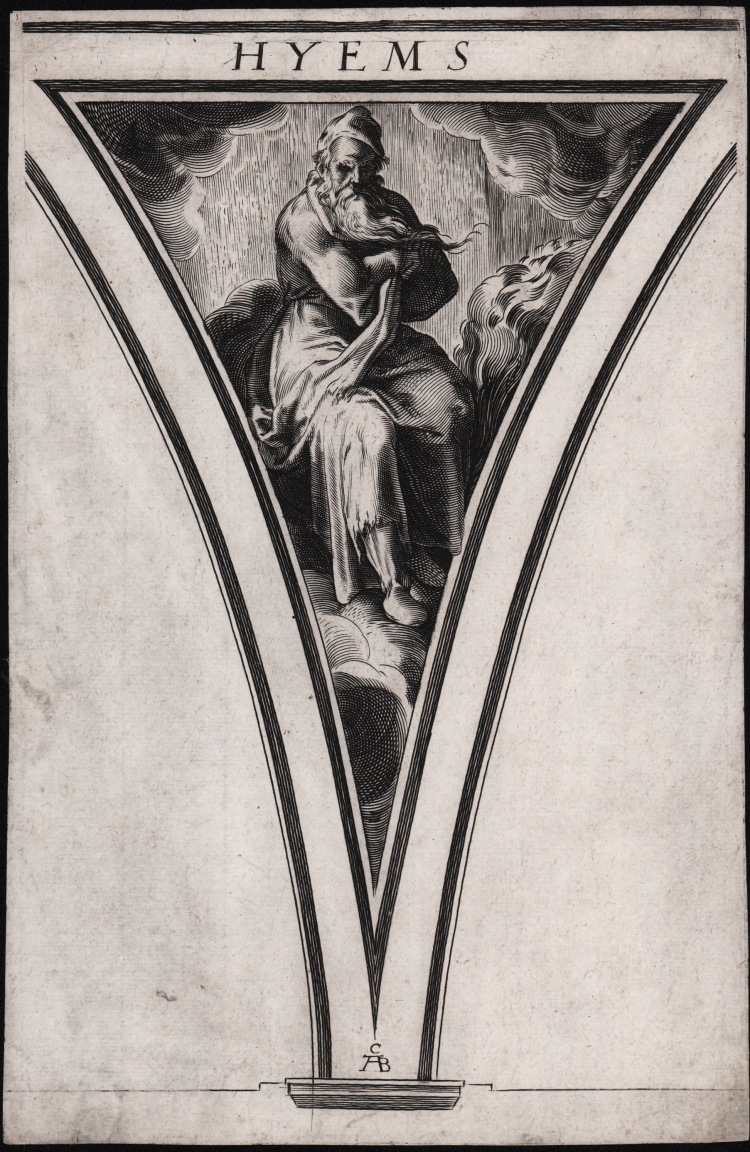




| Reference: | S41830 |
| Author | Cherubino ALBERTI |
| Year: | 1590 ca. |
| Measures: | 162 x 250 mm |



| Reference: | S41830 |
| Author | Cherubino ALBERTI |
| Year: | 1590 ca. |
| Measures: | 162 x 250 mm |
Engraving, lettered at top 'HYEMS', at bottom Alberti's monogram 'CAB'.
Winter (Hyems), represented as a seated man crossing his arms across his chest, a spandrel-shaped composition from the series The Four Seasons after Polidoro da Caravaggio.
A fine impression, printed with tone on contemporary laid paper, trimmed to the platemark, perfectly repaired are at the lower right corner, otherwise very good.
Ex collection John Barnard (Lugt 419).
Literature
Bartsch, XVII.84.104; Manescalchi, Cherubino Alberti, 136.
Cherubino ALBERTI Borgo San Sepolcro 1553 - Roma 1615
|
Engraver, painter and constructor of crossbows, from Borgo San Sepolcro. Active in San Sepolcro
and Rome. Record of death 18 October 1615.
The earliest dated engravings are of 1571.The bulk of his engraved work was produced between 1571 and 1590. Mythological,devotional and ornamental subject ;portraits and antiquities. Prints after Raphael,Michelangelo,Polidoro da Caravaggio,Andrea del Sarto, Rosso Fiorentino, Taddeo and Federico Zuccaro. He kept control of the majorityof his plates and was responsible for publishing them. After his death his heirs reissued many of them, with a privilege of Pope Urban VIII.
|
Cherubino ALBERTI Borgo San Sepolcro 1553 - Roma 1615
|
Engraver, painter and constructor of crossbows, from Borgo San Sepolcro. Active in San Sepolcro
and Rome. Record of death 18 October 1615.
The earliest dated engravings are of 1571.The bulk of his engraved work was produced between 1571 and 1590. Mythological,devotional and ornamental subject ;portraits and antiquities. Prints after Raphael,Michelangelo,Polidoro da Caravaggio,Andrea del Sarto, Rosso Fiorentino, Taddeo and Federico Zuccaro. He kept control of the majorityof his plates and was responsible for publishing them. After his death his heirs reissued many of them, with a privilege of Pope Urban VIII.
|